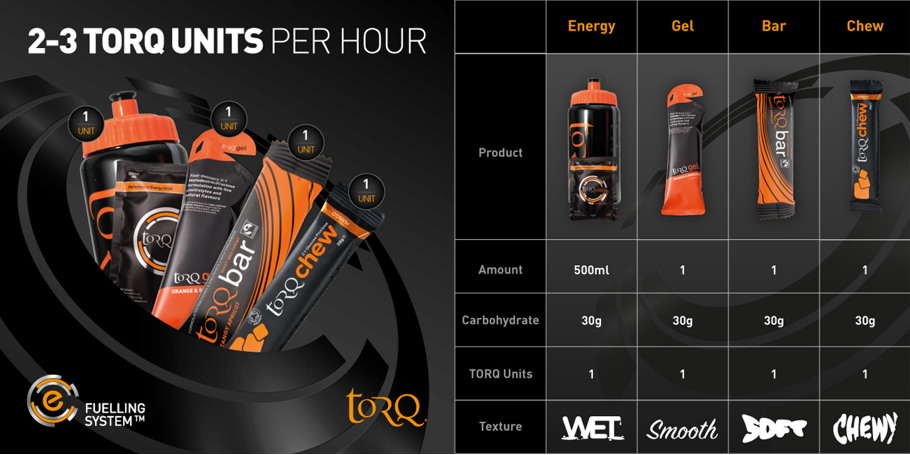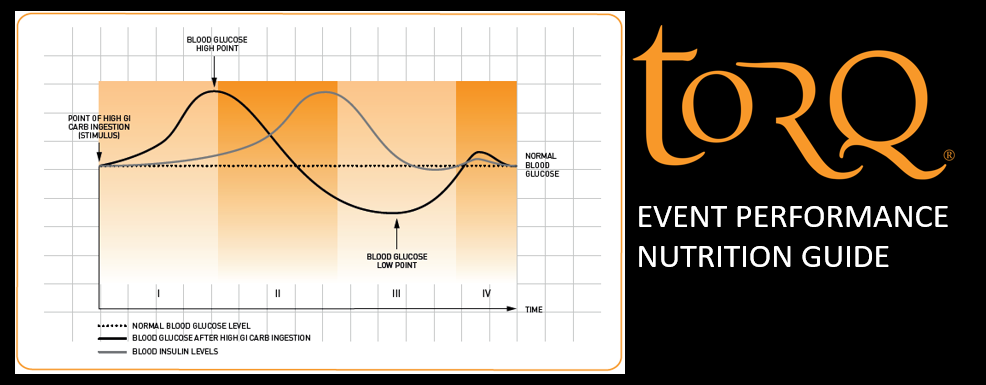Our article on Fueling Essentials for trail running was a big hit, so we thought we would do the same for mountain biking. Trick is, the essentials apply to nearly any endurance discipline. No secrets, just the basics. We make it easy - so read below!
The mountain bike season spans the entire year (depending on climate), which often makes training and peaking a common pillar of many athlete’s lives. Or perhaps you just like to shred it when it feels right, or hang with friends on the trail or local race. No matter the persona, we thought it best to list down a few key points and resources to help you build understanding of proper endurance fueling to deliver performance when it counts on the trails!
Lets cover the basics here...
Key Point 1: Mountain Biking is hard. You will need to fuel your stressed muscles. Here's why...
Start simple. Click on the video below to understand the most fundamental question - Why Fuel? (as an endurance athlete)
Note that the longer the duration of the training/race, the more important it is to maintain a supply of carbohydrates to your working muscles.
Many modern XC race courses have increased in technicality, where riders will have tight turns, technical roots, punchy climbs, all mixed around flowy and techy downhills thrown at them. Many are shorter in duration, supporting a ‘lap’ type race structure, where at race-pace, it all comes screaming at you. This elevated pace drains your internal fuel supplies (glycogen) much faster than your daily training regiment.
Your body, when properly in a well-rested and recovered state, stores roughly 500g of precious glycogen (stored carbohydrate in your liver and muscles). This may sound like a lot, but it goes quickly, supplying the body with high-performance fuel for only 60-120 minutes depending on exertion of the athlete.
For shorter races of <2hrs, and if your body has glycogen topped up (from a well balanced regular diet, a good dinner and pre-race breakfast), you should be able to maintain adequate endurance for the course with adequate supply of a hydration solution (water + carbohydrate + electrolytes), and perhaps a quick fuel source (like a gel) if you need it. When a race, or high-intensity training, goes beyond 1.5 to 2+hrs of sustained effort, in-race fueling is not just critical, it is essential and often determines the outcome of the race.
'Bonking', or 'hitting the wall', is not just a figure of speech, but a course of action by the body when the brain starts dramatically curbing your exertion levels to preserve blood glucose (glycogen) for its greedy self, which can take effect as early as 60mins of intensive riding. The number 1 mistake we see even the most seasoned athletes make is to delay fueling and hydration until the point when they 'feel' they need it (typically beyond an hour into a race). At this point, you have already dug yourself in a hole you won't be able to recover from, and your performance will be affected. A tip we like to provide to all athletes is to take a drink from your bottle/bidon as soon as you settle into the course (within 5 minutes of starting). This helps start your mental clock for fueling.
As you can never quite take in (and digest) enough fuel to recoup what you are burning in these conditions, we recommend to all athletes to base fueling intake by the clock. For most athletes, consuming a TORQ gel every 60 minutes will help keep carbohydrate supplied to working muscles while slowing depletion of your precious (and limited) glycogen stores (for advanced athletes, it is possible to increase gel intake to once every 30 minutes, boosting total overall carbohydrate delivery). TORQ gels benefit you with both carbohydrates and electrolytes, while not requiring water to 'wash down' while focusing on the trail ahead.
For hydration, it is recommended to consume 16oz (~500ml) of fluid solution every hour. To make this easy, find the 16oz point on your water bottle\bidon, typically right around where the 'neck' of the bottle starts. This amount of fluid should be consumed each hour, and if you have not consumed it by hours' end, consume it. Further, do not ICE down your bottles. To aid digestion, which is key here, keep fluids room temp or even warm. Your body is actually very effective at cooling itself by bringing blood near the skin, and cooling it through evaporation of sweat. Don't try to cool the body down from the esophagus outward.
Simple Race Recommendation for Youth Riders racing <60mins:
- Consume 1 serving of TORQ Energy or TORQ Hydration in a pack or bottle. Either solution will mix to a minimum of 500ml, or 16oz. TORQ Hydration is 15g of Carbohydrate, vs 30g of Carbohydrates for TORQ Energy. Both contain same full electrolyte profile. We typically recommend TORQ Hydration as a suitable pre-load hypotonic solution, or for riders doing shorter durations not requiring endurance fueling.
Simple Race Recommendations for those racing >60mins, follow BOTH bullet points below:
- 1 bottle of TORQ Energy solution (16 oz) every hour of racing. This solution will deliver 30g of carbohydrates, and good amounts of all 5 core electrolytes.
- 1 (or two if elite level) TORQ Gels per hour. Gels deliver both 30g of carbohydrate and all 5 core electrolytes. (Note for non-youth riders: A caffeinated gel is especially useful in longer durations >3hrs, where caffeine helps to keep you mentally sharp and focused on the course.)
- TORQ Bars and Chews can also be substituted for the Gels, however, the Gels are often preferred for racing due to faster means of consuming, and digesting the product.
To really follow a complete fueling and hydration strategy, watch this video on the TORQ Fueling System outlining how, and what to do come race day (and training days!).
Key Point 2: What you do leading up to the race WILL affect your performance.
Note that your glycogen stores should be nearly fully loaded by the time you wake up, but you will have lost some of your liver glycogen during your overnight fast. This can easily be topped up with a moderately high carbohydrate breakfast. Ordinarily, for 1-day events like a sub-4hr xc race, regular instant oatmeal or breakfast cereal with some coffee and banana will work just fine! Notice this is breakfast which is higher in carbohydrate, easy to digest, and low in fat.
Fat is the enemy first thing in the morning and the hours before you compete. Prior to, during, or immediately after exercise are not the right times to consume fat. Fat blocks the absorption of carbohydrate due to its slow passage through the digestive system. So, your breakfast, and any pre-race snack should be carbohydrate focused, without fats (and too much protein), thus able to be absorbed quickly and efficiently, leaving your digestive system clean and ready to accept the during-event fueling you’re going to throw at it.
Speaking of throwing things at it...Carbohydrate loading ('Carb-loading') isn’t necessarily the appropriate course of action for 1-day events, and this probably forms the number 2 mistake many athletes make. For multi-day stage runs/rides, there is a place for this (which we will have an article soon!) but heavy carb-loaded meals the night before and morning of an event can leave your legs feeling heavy and a bit ‘sparkless’ due to the water required to store carbohydrates. Many people attack a big bowl of pasta the night before, which is fine, but be careful of what goes on top (heavy oils, fats, and over indulgence of proteins). Our advice, if you are not running/riding >4hrs, stick to a regular, clean meal plan and avoid the heavy pastas and starches (and fats!) the night before. Again, click on our Event Performance Nutrition Guide above for suggestions.
Our recommendations are simple for a typical trail race less than 4hrs in duration:
- Night before: Get good rest, drink water, and avoid alcohol (or stick to a glass of red, or a single beer).
- Morning of: simple breakfast routine. We like oatmeal with a banana, coffee, and water. Eat 2-3hrs before the race if you can.
- Race Start: Drink water leading up to the event. Keep coffee intake to 1-2cups (too much caffeine, above ~300mg becomes diuretic). If needed, consume 1 energy gel 5 minutes before the race. 4mi racers should not need this if breakfast was consumed. (be sure to ask the TORQ team at the events what they like for breakfast!).
- During Race: consume 1 TORQ Energy gel every 30 minutes (this will bring you to 60g carbohydrate/hr). Compliment with fluid intake from each aid-station pass. Note, with TORQ fueling products (drink mix, bars, gels, and chews), the athlete can increase total consumption of carbohydrate up to 90g/hr (up from 60g with glucose only products). This is a significant advantage for athletes looking to compete for the top and maintain performance throughout the race (keep your race pace!). Once again, if you haven't taken the time to watch these very short, informative videos on optimal fueling, click below:
- Why Fuel? (limitations & how to fuel)
- TORQ Fueling System (simple way to optimally fuel your max performance)
Key Point 3: If you plan to push yourself, you will sweat. Here is how to hydrate correctly!
When training/racing, consumption of a carbohydrate (glucose) based sports drink will hydrate you faster than water alone, and even water + electrolyte tablet. This is due to the glucose literally pulling water and sodium molecules through the stomach via 'facilitated transport'.
The video below communicates the essential facts about the role of glucose in the hydration process, so please take the time to watch it – it only lasts about 1 minute.
It’s a little-known fact that carbohydrate-free electrolyte tablets do not contain glucose and will therefore not hydrate you as rapidly and comprehensively as a product containing glucose, which is why TORQ don’t have such a product in their portfolio. As an analogy, trying to run strictly on electrolyte tablets would be like trying to pump spark-plugs alone into a race car for a 500lap race...where's the fuel?
So, come race day, eat a clean breakfast high in carbohydrate, low in fat. Plan to set your fueling by your watch come race time, and don't forget to top-up your carbohydrate supplies at each aid station. Become #UNBOKABLE.
As always, the TORQ team is happy to answer any questions you may have regarding your nutrition for training and race day. Reach out to us at info@torqusa.com, or find us at TORQUSA on fb and insta! Show us some insta pictures with our products and get a prize!
Enjoy, happy trails, and come visit the TORQ team for nutrition insight and counsel come raceday!
TORQ Team



